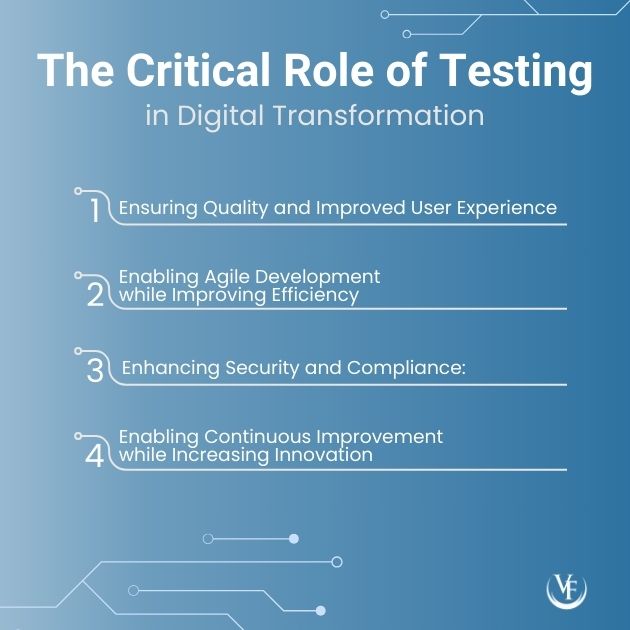
Testing: The Critical Element in Your Digital Transformation Toolkit
What is Digital Transformation (DX)?
Digital transformation (sometimes abbreviated as DX) refers to the process of using digital technologies to change how an organization operates fundamentally, delivers value to customers, and competes in the market. It involves reimagining business models, processes, products, and services to take advantage of new digital technologies and meet changing customer needs.
The term “digital transformation” has evolved as technology has advanced and organizations have increasingly embraced digital technologies. Initially, it referred primarily to adopting new digital technologies, such as cloud computing and mobile devices, to improve operational efficiency and productivity.
However, as digital technologies have become more integrated into all aspects of business, the scope of DX has expanded. Today, it encompasses a much broader set of activities, including using data analytics to inform decision-making, leveraging artificial intelligence and machine learning to automate processes and gain new insights, and leveraging digital platforms to deliver new products and services to customers.
The Critical Role of Testing
Testing is a critical aspect of a successful digital transformation. It ensures that the software or system being implemented meets the required specifications, functions correctly, and is secure. There are numerous ways in which testing plays a critical role, including:
- Ensuring Quality and Improved User Experience: Testing ensures that software is high quality, meets requirements, and is user-friendly. Furthermore, testing provides a seamless user experience by closely replicating real-world scenarios while fostering confidence in updated processes. Whether we are targeting internal, external, or a mix of users, the goal should be to provide an optimal experience, as this increases adoption and decreases change resistance.
- Enabling Agile Development while Improving Efficiency: Testing is a critical component of Agile development, allowing continuous feedback, testing, and improvement. By identifying and fixing issues early in the development process, organizations can avoid increased time and costs. Deploying a bug fix once a solution is live is much higher and brings with it a lot more risk to the business.
- Enhancing Security and Compliance: Testing ensures the software is secure and protects against cyber-attacks, data breaches, and other security risks. In addition, from a compliance standpoint, it ensures that the software complies with industry regulations, standards, and guidelines.
- Enabling Continuous Improvement while Increasing Innovation: Testing provides valuable feedback to improve the software continuously, ensuring it meets evolving user needs and stays competitive in the market. In addition, testing enables experimentation and innovation, allowing new features and products to be developed.

There are many types of testing strategies with differing objectives. Determining which ones apply to your initiative is challenging without specific input from DX experts. Victoria Fide can assist you in defining a testing strategy that will ensure success. Quality Assurance Planning is just one of our services which equip companies to succeed in using technology to bring positive, transformational change. As trusted advisors, we provide tools and guidance to bring your transformational initiatives to a successful conclusion.
We are here to help! Contact us at info@victoriafide.com for more information, or click here to schedule a free 30-minute consultation.
About the Author
Tammy Plowman is the Solution Architect for Victoria Fide Consulting. With twenty years dedicated to manufacturing and distribution, she has managed procurement, finance and accounting, inventory control and costing, process improvements, and system implementations. Tammy enjoys being a catalyst of change when supporting cross-functional team members on the journey to reimagine their business.

